Hands-On With the Nikon Z 28-400mm f/4-8 VR: One Lens to Cover Them All
Nikon’s new Nikkor Z 28-400mm f/4-8 VR lens is a groundbreaking full-frame zoom lens, offering 14.2 times zoom in a lightweight package. Does it come with unacceptable compromises, or is it poised to be the ultimate all-in-one lens for Nikon Z photographers?
Nikon is no stranger to superzoom lenses. It made a 28-300mm lens for its F-mount SLR cameras, which I found convenient and optically decent. The DSLR era featured a saturated market where nearly everyone had a quiver of superzooms for every lens mount.
Since then, mirrorless full-frame superzooms that go beyond 200mm are rare. Is it because of a lack of demand? Nikon does make a 24-200mm f/4-6.3 for Z mount, and despite being a good lens, it still falls short in the reach category. Panasonic very recently released a full-frame 28-200mm for L-Mount that certainly provided versatility to that system. But now, Nikon has broken the mold with an extremely long-reaching 28-400mm f/4-8 superzoom.
Can a lens this diverse in its focal range still deliver acceptable image quality? Will we see a renaissance of the superzoom lens?
The 28-400mm I played with was a pre-production sample, but I had an opportunity to get at least some early findings about how this lens performs. A superzoom lens seems like a travel lens, so I felt a road trip was in order, and I headed down to the lovely town of Nanton, Alberta. There were plenty of photographic opportunities for a giant-ranged superzoom lens in Nanton, from a row of grain elevators to a pair of pigeons huddling in the distance.
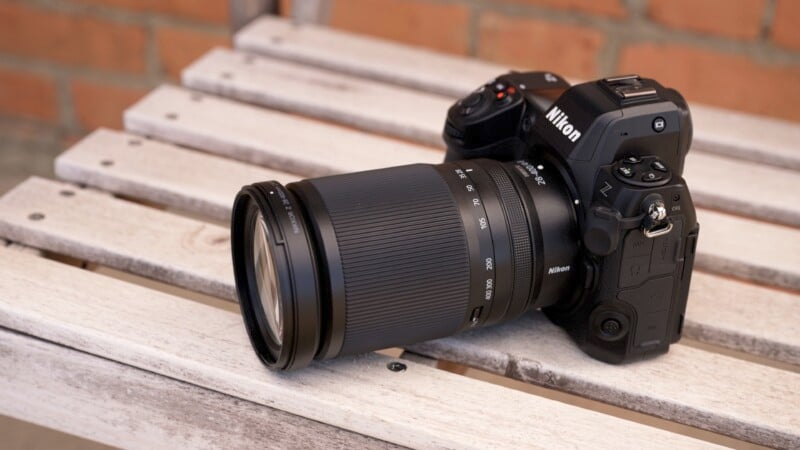
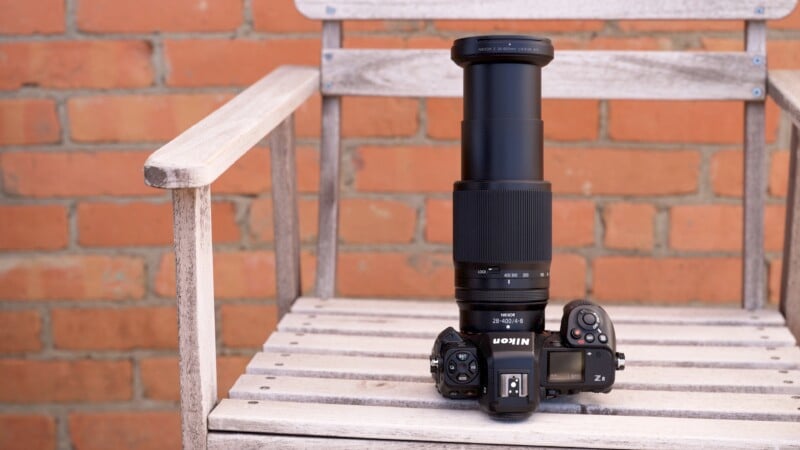
On The Road Again
The Nikkor Z 28-400mm uses STM motors to drive the glass elements, and its focusing is smooth, if not particularly fast, at the telephoto end. Focusing from near to far can take a little time, but it was a nonissue in practical situations where you mainly focus at long distances. Also, the focusing speed when using the lens in its wide to the normal range is fast enough.

The Nikkor 28-400mm f/4-8 is surprisingly light, weighing only 26 ounces (725 grams). The lens balances well even on lighter bodies like the Z6.
Although lightweight, the 28-400mm extends quite far physically and has a 77mm filter thread diameter, adding to its larger dimensions. This is a grower when extended to 400mm, and even when zoomed to 28mm, it takes up a fair amount of space in the bag.
There is plenty of room on the barrel for a wide zoom ring, so even with the hood reversed, it is easy to manipulate. I like the locking switch to keep the zoom from creeping when walking around. There is also a customizable control ring although, curiously, that is about it. Focusing controls have to be done in the body, and although the lens does have VR, there is no switch to control it on the lens.
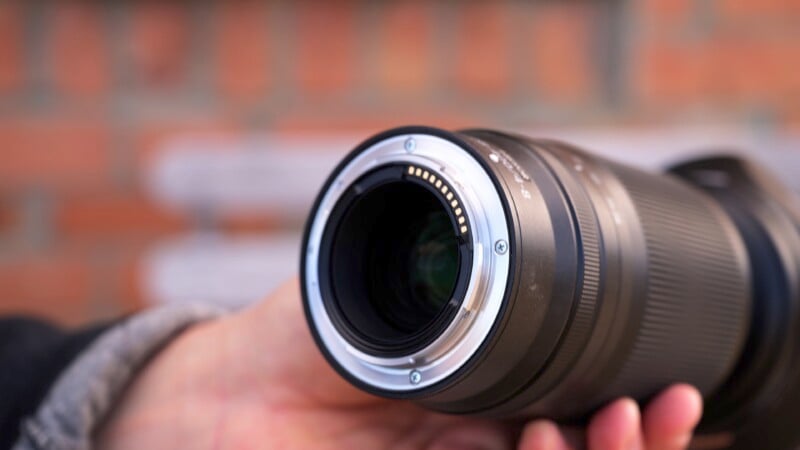
A Good Compromise
Superzoom lenses usually have very complicated optical formulas with many glass elements. I was concerned about shooting the lens toward the sun because all that glass has a tendency to cause internal reflections. I was very surprised to see almost no flare and minimal ghosting. Even stopped down, the amount of ghosting is still well controlled thanks to excellent Nikon coatings. Sunstars aren’t particularly noteworthy, as expected.
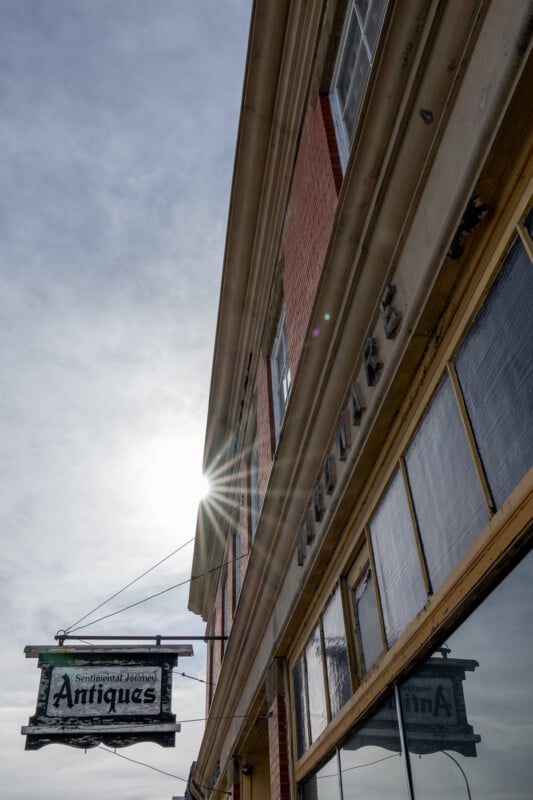
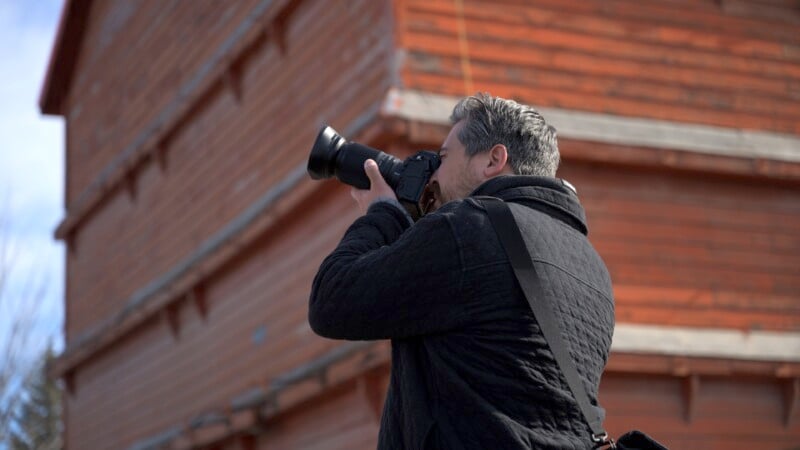
The 28-400mm can deliver shallow depth-of-field towards the long end of the range despite its slow f/8 aperture. Unfortunately, bokeh quality is not a strong point of the 28-400mm. No onion rings are present in specular highlights, but there is a curious double ring around the outside. When stopped down, the specular highlights also show a distinctly polygonal shape, thanks to a nine-bladed aperture. The out-of-focus backgrounds look chaotic because of this and don’t smoothly transition out of focus as well as they could. Still, because of this lens’s relatively slow maximum apertures, the downsides aren’t that noticeable.


I enjoyed using the 28-400mm lens for close-up shots as it achieves a roughly 1:3 life-size reproduction ratio, whether at 28mm or 400mm. This adds quite a bit of versatility to the lens and allows for wide-angle macro shots with the background pushed far away or compressed close-up shots with plenty of working distance. The autofocus performance was still accurate up close, and the sharpness was decent.


Because our sample was a pre-production lens and I only had an afternoon with it, there wasn’t enough time to shoot test charts to evaluate sharpness. When assessing the sample images in the following days, I found the sharpness excellent at both ends of the lens range. Corners help up nicely, too, and the lens performs well at its widest open apertures. This is a good thing, too, because the Nikkor 28-400mm doesn’t capture much light.


Just Like Old Times: Positive First Impressions
I’m happy to see the return of the superzoom to more mirrorless camera systems, and Nikon has pulled off a dramatic lens range while mitigating the downsides well.
The main deciding factor will come down to whether the slower aperture range is acceptable or not. Although the widest aperture of f/4 is fine at 28mm, the aperture immediately drops as you zoom out, and by 200mm is already at f/8. This will be acceptable for casual shooting on sunny days or as a fair-weather travel lens, but serious wildlife photographers may want to look for something brighter. As the light levels drop, the ISO will have to go up sooner than may be desired, and this is the main trade-off for such an extensive zoom range.
Still, the larger size and darker apertures are acceptable trade-offs for such a versatile zoom range. Some users might be perfectly fine with the 200mm max range commonly found on the market, but there is no denying that 400mm can make a big difference in the field.
No one should be buying lenses like this expecting to have their cake and eat it, too. But if you want one lens that can almost do it all and still pull off lovely imagery, Nikon has succeeded in a big way.